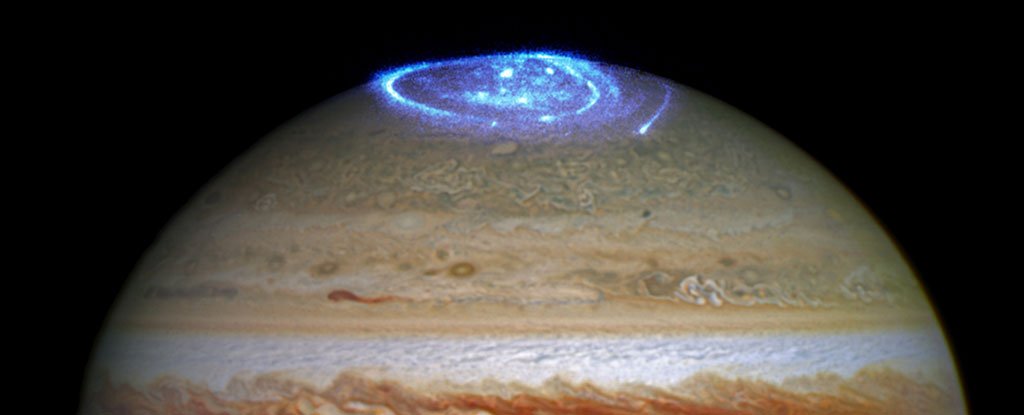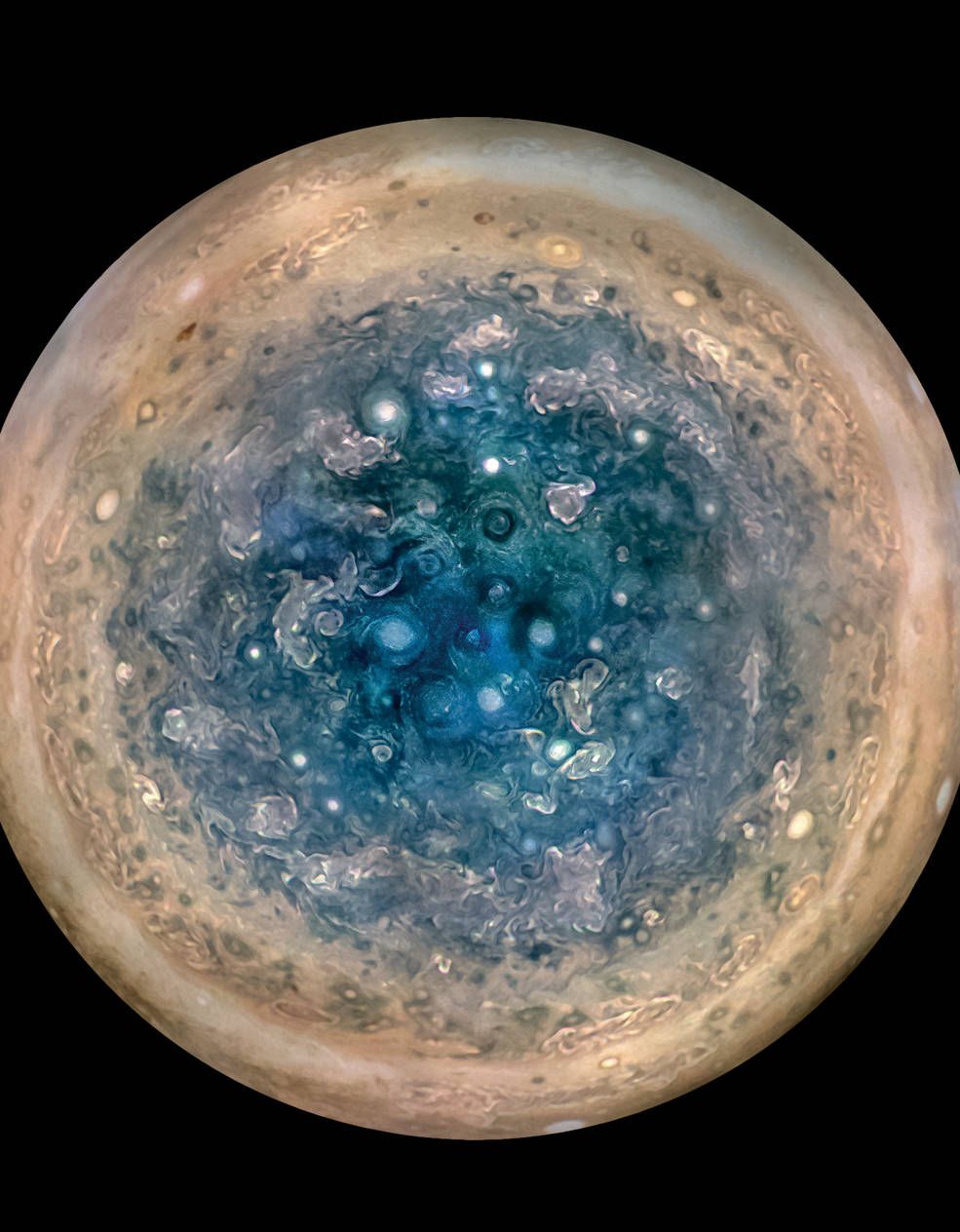Welcome to DU!
The truly grassroots left-of-center political community where regular people, not algorithms, drive the discussions and set the standards.
Join the community:
Create a free account
Support DU (and get rid of ads!):
Become a Star Member
Latest Breaking News
General Discussion
The DU Lounge
All Forums
Issue Forums
Culture Forums
Alliance Forums
Region Forums
Support Forums
Help & Search
Science
Related: About this forumHow a Magnetic 'Tug-of-War' With Io's Volcanic Eruptions Creates Jupiter's Auroras

(NASA, ESA, and J. Nichols/University of Leicester)
MORGAN MCFALL-JOHNSEN, BUSINESS INSIDER
5 FEBRUARY 2022
Jupiter's auroras – the lights that dance around its poles – are the most distinct in our solar system and over a thousand times brighter than Earth's aurora. Now, a new study confirms that these otherworldly polar lights come from a unique source: space lava.Jupiter's moon Io is the most volcanically active world in the solar system. Its more than 400 active volcanoes regularly shoot lava dozens of miles high, where it falls into Jupiter's orbit and becomes plasma – "a soup of electrically charged material," astronomer James O'Donoghue told Insider.
That space-lava-turned-plasma is then swept up in Jupiter's powerful magnetic field, which channels it to the planet's poles. There, the electrically charged particles interact with gases in the atmosphere to create aurora lights.
This was the reigning theory for two decades.
. . .
NASA's Juno mission threw that theory into question once it arrived at the giant planet in 2016. The Jupiter-scouting spacecraft didn't find any signs of electric currents at the poles.
More:
https://www.sciencealert.com/a-magnetic-tug-of-war-drives-jupiter-s-fascinating-auroras
~ ~ ~
Rare glimpse of two of Jupiter’s auroras reveal they're dancing to different beats
Invisible X-ray auroras pulse on Jupiter’s northern and southern poles
By Rachel Becker Oct 30, 2017, 4:43pm EDT

A view of Jupiter’s south pole from the NASA’s Juno spacecraft. The ovals are massive cyclones stretching up to 600 miles across. Image: NASA/JPL-Caltech/SwRI/MSSS/Betsy Asher Hall/Gervasio Robles
For the first time, scientists have observed the high-energy auroras pulsing on both of Jupiter's poles at the same time. They discovered that, unlike the northern and southern lights here on Earth, these two auroras on Jupiter behave nothing alike.
By studying rare observations of the gas giant’s polar lights, scientists helmed by William Dunn and Andrew Coates at University College London found that the northern and southern auroras brightened and faded completely independently from one another. The surprising finding, described today in the journal Nature Astronomy, is a step toward understanding what exactly is behind Jupiter’s auroras that shimmer with invisible X-rays at the poles.
Auroras are the signatures of a planet’s magnetic field, which are thought to be key for life because they protect a planet’s atmosphere from the scouring winds blowing off its nearby star. Magnetic fields show up on pulsars, exoplanets, and brown dwarfs, but Jupiter is close to home. So, by studying Jupiter’s auroras and magnetic fields, we can better understand what’s happening on far-away worlds.
“If we’re going to search other planets for other life, then we’re going to want to find places that have magnetic fields,” Dunn says. “Understanding in our Solar System what the signatures for northern lights are and what they mean is important, because hopefully at some point in the future, we’ll be looking at these signatures at extra-solar planets.”
More:
https://www.theverge.com/2017/10/30/16576160/jupiter-x-ray-aurora-chandra-xmm-space-telescopes-northern-southern-poles
InfoView thread info, including edit history
TrashPut this thread in your Trash Can (My DU » Trash Can)
BookmarkAdd this thread to your Bookmarks (My DU » Bookmarks)
0 replies, 643 views
ShareGet links to this post and/or share on social media
AlertAlert this post for a rule violation
PowersThere are no powers you can use on this post
EditCannot edit other people's posts
ReplyReply to this post
EditCannot edit other people's posts
Rec (4)
ReplyReply to this post